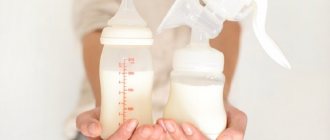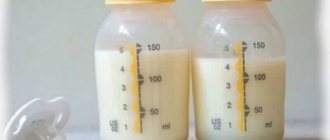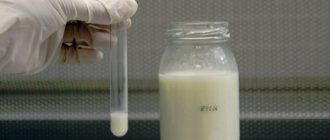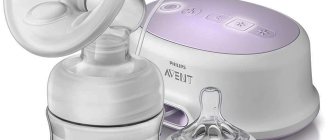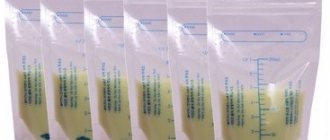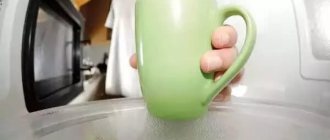With proper weaning of the baby from the breast, the amount of milk decreases naturally. But there are situations when lactation must be stopped forcibly.
One of the proven and effective ways to urgently stop breastfeeding is to properly wrap the breasts with a cloth, diaper or elastic bandage.
The main causes of breast constriction
Breast constriction was actively practiced in Soviet times, when a woman went to work a few weeks after giving birth. Today, doctors insist on prolonged breastfeeding (BF), which is beneficial for both the child and the mother.
However, in some cases, lactation must be completed as soon as possible.
These include:
- HIV infection;
- open tuberculosis;
- severe kidney or liver damage;
- severe anemia;
- long-term use of certain medications that affect the composition of milk.
The method is based on the principle of compression: due to forced compression of the glands, milk production decreases and then stops altogether.
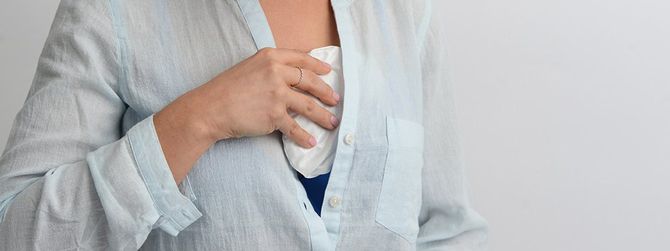
In some cases, for example with purulent mastitis, breast tightening is used as a temporary measure.
After recovery, lactation can be resumed.
Before transferring breast milk, a woman must prepare not only mentally, but also physically.
A few days before the procedure, it is necessary to exclude foods that increase lactation from the diet:
- walnuts;
- seeds;
- halva;
- fennel;
- dill;
- Adyghe cheese;
- carrot juice;
- dairy foods.
The total volume of liquid drunk per day should not exceed 1.5 liters. Additionally, it is recommended to take mint or lingonberry decoction, which reduces milk production.
Advice from Dr. Komarovsky
Usually, the process of stopping breastfeeding is a serious stress not only for the child, but also for his mother. The transition to adult nutrition should not be abrupt. However, it happens that a woman has health problems and loses the opportunity to breastfeed her baby. At the same time, milk continues to be released, discomfort occurs, accompanied by pain and bloating. Therefore, in order to avoid problems with the question of how to stop lactation, Komarovsky, a famous pediatrician, gives recommendations on ending the breastfeeding process. First of all this:
- Limiting maternal fluid intake. This means that she should not force herself to drink more than was necessary during feeding.
- In addition, you should think about reducing the sucking time; you can distract the child during this period and offer him entertainment.
- There is no need to express milk.
- It is beneficial to exercise because less milk is produced when you sweat.
- You should not eat foods that stimulate the production of mother's milk.
- You can try to spoil the taste of milk, for example, by including garlic and onions in your diet.
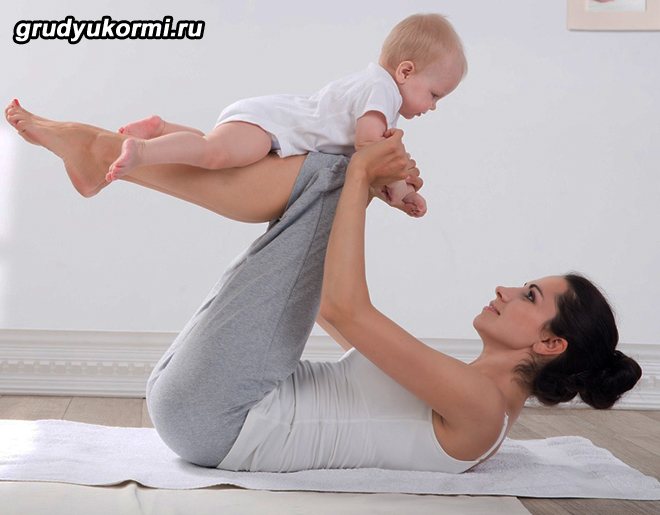
Before finishing breastfeeding, Komarovsky advises not to eat soups, foods that cause increased water consumption. Instead of tea, it is better to drink herbal decoctions that have a diuretic effect. Dr. Komarovsky recommends using decoctions of basil, lingonberry, horsetail, and elecampane. For this you need 1 tbsp. l. pour 1 liter of herbs or herbal collection and drink throughout the day.
Chest pulling technique
Immediately before re-tying, prepare a long piece of clean soft cotton fabric, a large diaper or a thin towel. It is allowed to use an elastic bandage. The mammary glands are expressed until they are completely emptied so that they become soft.
Follow these steps:
- The diaper (fabric) is folded several times, forming a wide bandage.
- Absorbent pads, gauze pads or clean pieces of cloth are applied to the nipples.
- The bandage is applied to the chest, leaving equal free ends.
- The ends are brought behind the back, crossed and brought forward (for a better effect, the ends can be twisted with a weak rope).
- The edges of the diaper are straightened in width.
- Crossing is done again, but without a tourniquet.
- The ends are tied at the front or back depending on the length of the piece of fabric.
- Check whether the bandage is tightly applied and whether it causes discomfort.
Constriction is a manipulation that is difficult to perform alone, so you will need outside help. It is advisable that the first bandaging be done by a medical professional - in this case, you don’t have to worry about the result. Then close relatives can be involved in bandaging.
Elastic bandage or diaper: what to choose?
Any long piece of clean fabric can be used as a tight bandage. The only condition is that it must be soft to prevent chafing of the nipples.
Most often used for tightening the mammary glands:
- Elastic bandage. It can be purchased at a pharmacy or orthopedic store. Bandages vary in width and length. Some products are equipped with a metal fastener or Velcro for ease of use. The size of the elastic bandage is selected individually, taking into account anatomical features: constitution, bust size, etc.
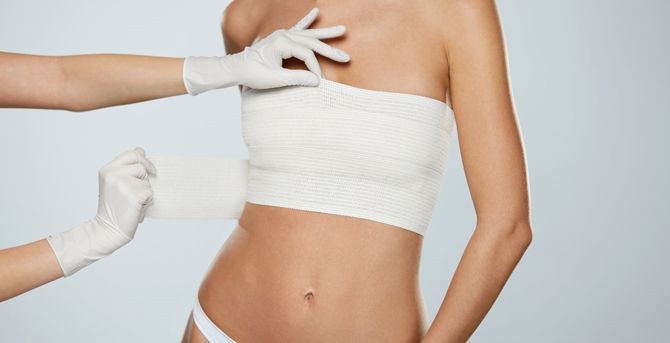
Elastic bandage - Diaper. The products sold in stores are too small in size and are not suitable for dressing. It is better to use a homemade wide diaper or a baby sheet folded several times. It is important that the fabric is cotton and does not contain synthetics.
It is allowed to use a gauze medical bandage 10-16 cm wide. But since it is not dense and elastic, the dressing is performed with intermediate fixation on the shoulders and a final knot on the back.
How long should breasts be constricted?
It is widely believed that the bandage should be worn for 3-5 days. This is what women did in Soviet times - then it was a widespread practice.
Today, doctors give different recommendations: the breasts can remain in the bandage for no longer than 2-3 hours during the day and no more than 8 hours at night. The mammary glands cannot be squeezed continuously, as this can lead to lactostasis and the next stage - mastitis.
The breast must be expressed every time there is a strong flow of milk, bloating or pain.
If the dressing technique is performed correctly and the time intervals are strictly observed, then milk production stops within a week.
Folk remedies to reduce milk supply
It is best to accompany breast tightening with folk remedies. Helpers here will be medicinal herbs: mint, sage, and some others.
Sage tea
To prepare the infusion, pour 2 tablespoons of sage into an enamel or ceramic bowl and add a glass of boiling water. You need to insist under the lid for half an hour. The resulting infusion must be filtered. To reduce lactation, drink 100 ml three times a day. However, you can continue to breastfeed your baby.
Mint infusion
Mint infusion is prepared from two tablespoons of mint and 500 ml of boiling water, which are combined in an enamel or ceramic bowl. You need to drink the infusion 2-3 tablespoons once every 8 hours.
Diuretic tea No. 1
Take cornflower flowers, licorice root and bearberry leaves (1:1:3). The mixture is poured with a small amount of boiling water. Drink 1 tablespoon half an hour before meals.
Diuretic tea No. 2
For preparation you need horsetail, wheatgrass rhizome, juniper cones (1:1:2). The tea steeps for half an hour. Drink 4 times a day, 1 tablespoon before meals.
The milk will not burn out instantly, but after several infusions the milk will become smaller, and then it will disappear altogether.
It is important to remember that if any complications occur, you must immediately stop pulling milk and consult a doctor. This will help to respond correctly to the problem and maintain the health of mother and baby.
Is it necessary to tighten the breasts after termination of pregnancy?
Dressing with a diaper.
Colostrum, a thick yellowish secretion from the mammary glands, may begin to be released several months before birth.
If for some reason the pregnancy had to be terminated at a long term, there is a possibility that the milk will begin to flow in full.
In this case, doctors prescribe medications and breast tightening. The procedure for applying a bandage is performed in the same way as during the period of forced weaning of the baby.
If severe hot flashes, discomfort or pain are felt, it is allowed to express milk to relieve the general condition.
Medicines to stop breastfeeding
If there are contraindications in which the chest cannot be bandaged, special medications can be used to increase the effectiveness of the tug. It is important to remember that when taking medications, you must completely stop breastfeeding.
Bromocriptine
The active ingredients of bromocriptine are alkaloids of the parasitic fungus ergot. Suppresses lactation by influencing the synthesis of prolactin, the hormone responsible for milk production. The less prolactin in the body, the less milk is produced.
Taking the drug is fraught with unpleasant complications: nausea, vomiting, confusion, convulsions. Due to the abundance of side effects, bromocriptine is banned in the United States. The Ministry of Health of the Russian Federation allows the use of bromocriptine for serious forms of mastitis, since the risk in this case is considered justified.
After stopping use, after about three weeks, a “ricochet” reaction may occur, the return of milk against the background of restoration of prolactin levels.
Cabergoline
Cabergoline also reduces prolactin production. Causes fewer side effects and prevents a “ricochet” reaction after the end of administration.
It should not be taken by women with diseases of the gastrointestinal tract, heart, blood vessels, kidney and liver pathologies. Increases the risk of exacerbation of chronic diseases. But it is considered a gentle remedy for stopping lactation.
Cabergoline has several trade names: “Bergolak”, “Agalates”, “Dostinex”.
Your doctor will help you choose the right drug.
Pros and cons of breast drag
Women began ligating their mammary glands a long time ago. But, despite the fact that this method of interrupting lactation is popular, many doctors still recommend it to this day.
The main advantage of this method is the rapid cessation of breast milk production.
However, forced ligation has its disadvantages:
- Severe compression of the milk ducts of the gland provokes stagnation of milk - lactostasis, which is the main cause of infectious mastitis.
- Improper application of the bandage and wearing it for a long time can cause injury to the soft tissues of the chest.
- Poor circulation in constricted vessels can cause pain and swelling of the mammary glands.
To avoid unpleasant consequences, it is recommended to examine your breasts daily. If painful lumps or swelling appear, you should immediately seek medical help.
Is it worth stopping lactation by dragging?
Breast milk transfer is a serious procedure that pediatricians recommend only in extreme cases.
pros
There are no positive aspects to this procedure. It is recommended to feed the child with breast milk until 12 months. This helps build his immunity.
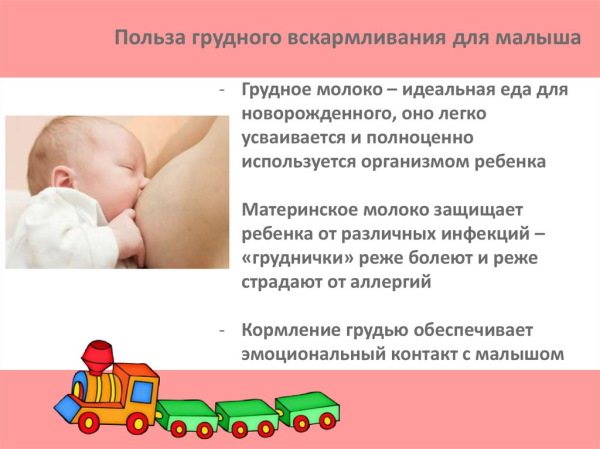
The only advantage of the procedure will be a situation where further feeding is dangerous for the child’s health. If the mother has an infection that can be transmitted to the baby through milk.
Minuses
The tugging procedure speeds up the cessation of milk production. But mammologists argue that this method should be used only in extreme cases, as it is associated with serious risks.
The consequences may be:
- The appearance of swelling, pronounced tenderness of the mammary glands. The chest becomes hard, any touch causes severe pain.
- With strong compression, the soft tissue of the mammary gland can be injured.
If a woman experiences a feeling of discomfort, the bandage must be immediately removed and the remaining milk must be completely expressed. If you ignore these sensations, the condition may worsen.
Additional ways to reduce lactation
We looked at how to bandage your breasts to reduce milk production. This method can be effectively supplemented. Compresses are made with camphor alcohol. They improve blood circulation and help avoid the development of mastitis. But the camphor should not come into contact with the nipples, so slits need to be made in the material. The compress solution itself is heated in a water bath and allowed to cool in warm water.

Another effective method is playing sports. Removing fluid from the body along with sweat will contribute to the rapid cessation of lactation. Water procedures will also help. The temperature in the bath should not exceed 37 °C. For greater effectiveness, you can add eucalyptus or peppermint oil to the water, just 5-7 drops.
If pain or any unusual or alarming changes in the tissue are observed during (or after) bandaging, consider whether the breast needs to be bandaged further. Be sure to consult a doctor.
What are the dangers of drawing breast milk?
Harmful advice that is given to a mother if she asks: how to transfer breast milk correctly - first you need to express it completely. How will her chest respond to complete emptiness? Certainly! She will produce the same amount of milk as she pumped.
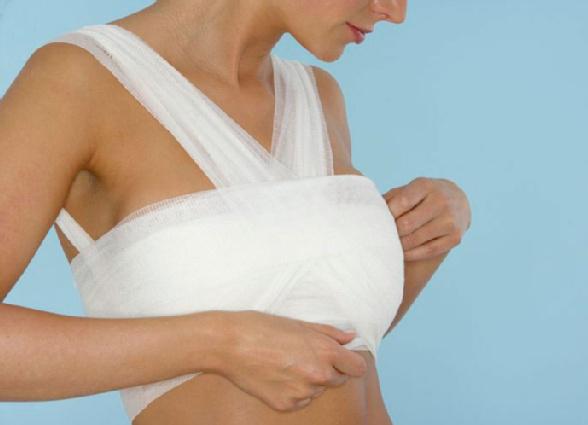
But now he has nowhere to go - the ducts have been pulled tight. And the milk stagnates, the breast becomes “stony”. And blockage of the ducts, in addition to severe pain, threatens:
Lactostasis can be dealt with by letting the milk come out and stretching the seals. But it hurts terribly. More information about lactostasis >>>To treat mastitis, surgery is required. After it, a course of antibiotics. You can forget about beautiful breasts after feeding. Read the article Mastitis in a nursing mother>>>As you can see, there is a hidden health threat in the breast pulling method to complete lactation.
[custom_ads_shortcode3]
Features of the procedure
How to tighten the mammary glands so that milk disappears? According to doctors, the breast tightening procedure does not have a very beneficial effect on a woman’s body and can cause discomfort. However, this is practically the only way when you can stop milk production in a short time. It should be noted that such manipulation will not reduce the volume and size of the breast. Also, she will not immediately stop the flow of milk; this will take some time. The secret of the procedure is that when ligated, the ducts are blocked and milk cannot move freely through the mammary gland. After a couple of hours, the woman feels that the breasts are no longer filled as much and the ducts become less active. The patient experiences discomfort, pressure on the chest and stiffness of movement.
How to transfer breast milk? Methods

After giving birth, many women refuse to breastfeed their baby for various reasons. But to stop milk production, a lot of effort must be made.
The first method is when the baby is taken to close relatives. This period should be two or three days. At this time, the baby should not have contact with the mother. This is a lot of stress for a newborn, because without feeding he loses contact with his mother.
The second method is to tighten the mammary glands in order to reduce the flow of milk. Using this method, you can stop lactation at home in just three days. But as practice shows, the gland stops producing milk around the 3rd week.
What if you still need to bandage your breasts? Preparation
Whatever the reason why a woman chose such an unsafe method (for example, to repay a large production or because of poor quality milk), she should know how to properly bandage her breasts. It is advisable to start changing the child’s diet to artificial formula a month before the first procedure.
On the day of the dressing, you need to limit your fluid intake so that it does not stimulate milk secretion. You should avoid pickles: they retain water in the body. To reduce the likelihood of discomfort and pain, between dressings it is better to wear a bra without wires and made from natural materials.
For the procedure itself, you will need elastic bandages. They can be replaced with any piece of long and dense material. A sheet or towel will do. Additionally, you need to buy camphor oil at the pharmacy.


